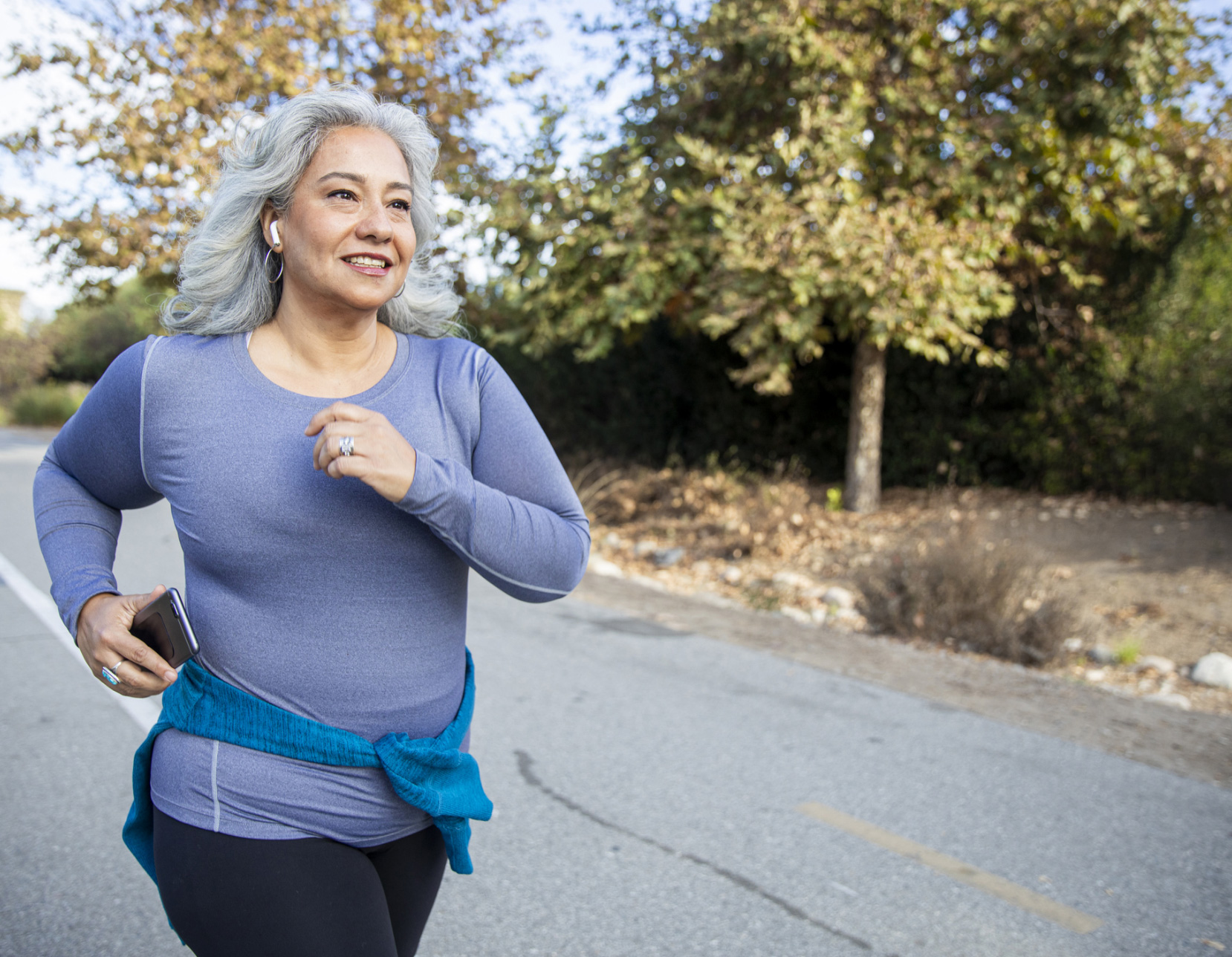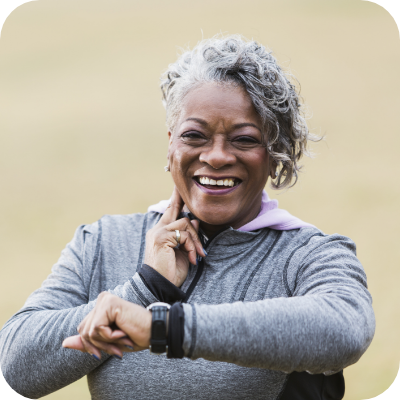
Protect your vision: Exercises to help with AMD
Exercising daily—even if it’s just going for a walk—along with other healthy habits may help reduce the risk of progression of your Age-related Macular Degeneration (AMD). Of course, the weight of living with a macular degeneration diagnosis or sudden loss of vision can make it hard to get out of bed, let alone take a brisk walk. Just know that a little heart-pounding activity will help raise your spirits as well as protect your vision.
How Can Exercise Help Slow Vision Loss?
Your doctor might have told you that exercise is good for your general health. It’s good for your macular health, too.
Direct benefits to the eyes:
The cells of your retina are very active. That high level of activity is healthy but it does create cell-damaging free radicals. As you age, the cell damage increases and your body’s natural repair mechanisms grow less efficient. Like the antioxidants you get from vitamins, regular physical activity is believed to boost the level of antioxidants in the eye, disarming those free radicals and enhancing your retinas’ self-repair abilities.
Indirect benefits to the eyes:
Scientists have linked some chronic conditions, such as heart disease, high blood pressure, and high blood sugar, to AMD. Controlling these health problems may help you preserve your vision, since exercise is one way to lower cholesterol, blood pressure, and blood sugar levels.
Questions and answerers about exercise and Macular Degeneration:

What types of activity?
Aerobic activities that speed up your heart are the most effective for eye health.

How much activity?
Researchers reviewing studies of exercise and AMD found that three hours a week, of low-to-moderate aerobic activity, were beneficial.
How do I gauge the activity?
If you can talk but not sing a song while working out, you’re exercising at moderate intensity.
Some examples of moderate aerobic activities that won’t stress your joints:
- Brisk walking
- Cycling
- Swimming and water aerobics
- Step-classes without the step platform
- Dancing
- Pushing a lawnmower
- Raking
Other types of exercise
Low vision can increase your risk of falling, so consider adding some balance exercises to your daily routine. Yoga (or chair yoga if you have mobility issues) and tai chi are good for balance and can also help you reduce stress. Your senior center might offer classes, or you can try learning from a DVD. Your balance exercises can be as simple as standing with one foot directly in front of the other—heel to toe—for as long as you can, a couple of times a day.
If your vision is severely affected, work with a low-vision specialist or physical therapist to learn how to modify the activities you enjoy. (These experts can also help you find apps and DVDs to guide your exercise.)
References: 1Ma, L., Liu, R., Du, J. H., Liu, T., Wu, S. S., & Liu, X. H. (2016). Lutein, Zeaxanthin and Meso-zeaxanthin Supplementation Associated with Macular Pigment Optical Density. Nutrients, 8(7), 426. https://doi.org/10.3390/nu8070426